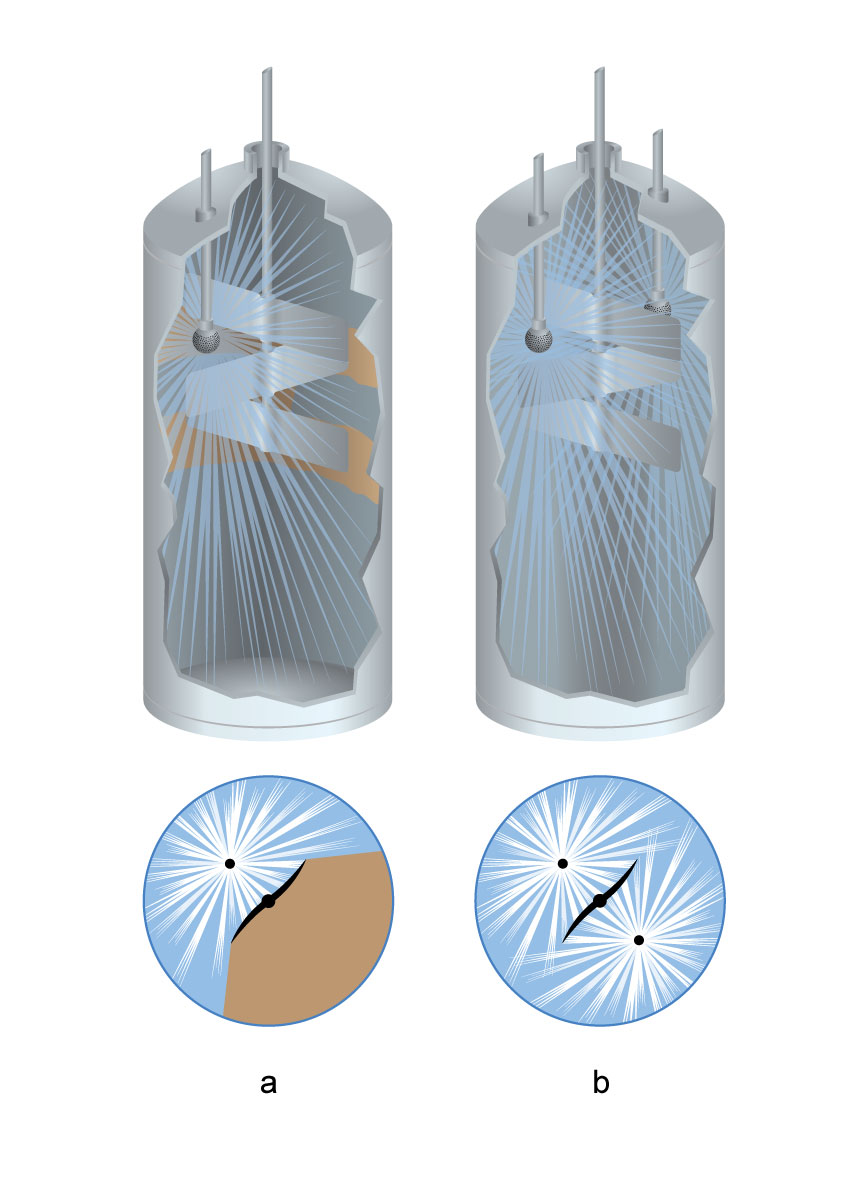Selecting tank cleaners - tank layout
The layout of a tank can greatly affect the choice of tank cleaning system deployed. In an ideal world all tanks would be cylindrical, with no internal obstructions and the tank cleaning system could be deployed nicely in the centre line. Obviously this ideal scenario is rarely the case and so thought needs to be given to where tank cleaners can be positioned and how to overcome any potential blind spots caused by internal obstructions.
Long or odd shaped tanks
The cleaning power of tank cleaning systems lessens the further the target surface is from the cleaning head. To get an even clean we ideally want to have all parts of the tank more or less an equal distance from the tank cleaner. With typical cylindrical tanks the differential between the furthest point and the nearest point of the surface is not significant and so not a concern. Most process vessels will have a height to radius ratio of between 1:2 and 1:6. However with long thin tanks this differential can be problematic resulting in an uneven or inefficient clean.
The most common example of this would be in road tanker vehicles. Typically these tanks will have radius to height (length) ratios of over 1:10 so a typical 2 metre diameter tanker with a length of 10 metres. This means that a single central tank cleaning system will have an only a 1 metre distance to reach the nearest point, whereas the furthest point is just over 5 metres away. Clearly the furthest points will not be as well cleaned as the nearest points.
There are two ways to compensate for this. The first solution would be to ensure that the tank cleaning system in place is sufficient to clean the surfaces at the furthest point. This will mean that some waste and 'over cleaning' occurs in the rest of the tank and so the downside is that it is less water efficient. The second solution would be to split the cleaning into two stages with smaller tank cleaners in each stage. This can, in some cases, be more efficient in terms of water usage but will add some cost as two systems will need to be deployed.

Internal obstructions
The presence of baffles and agitators within the tank can block the action of the tank cleaning head and so create blind or 'shadow' spots. For central obstructions like an agitator shaft this can often be overcome by installing two tank cleaning heads either side of the obstruction. For more complex obstructions it may be necessary to install some additional spot cleaning systems that specifically target the problem areas.